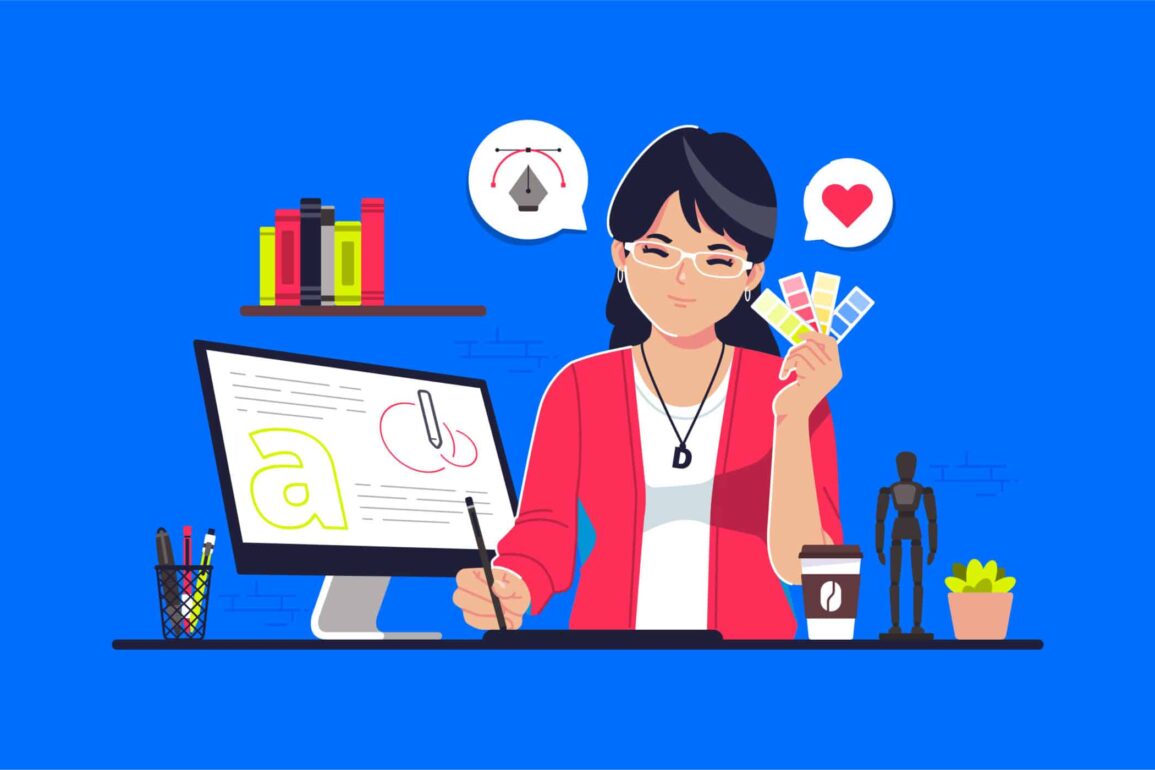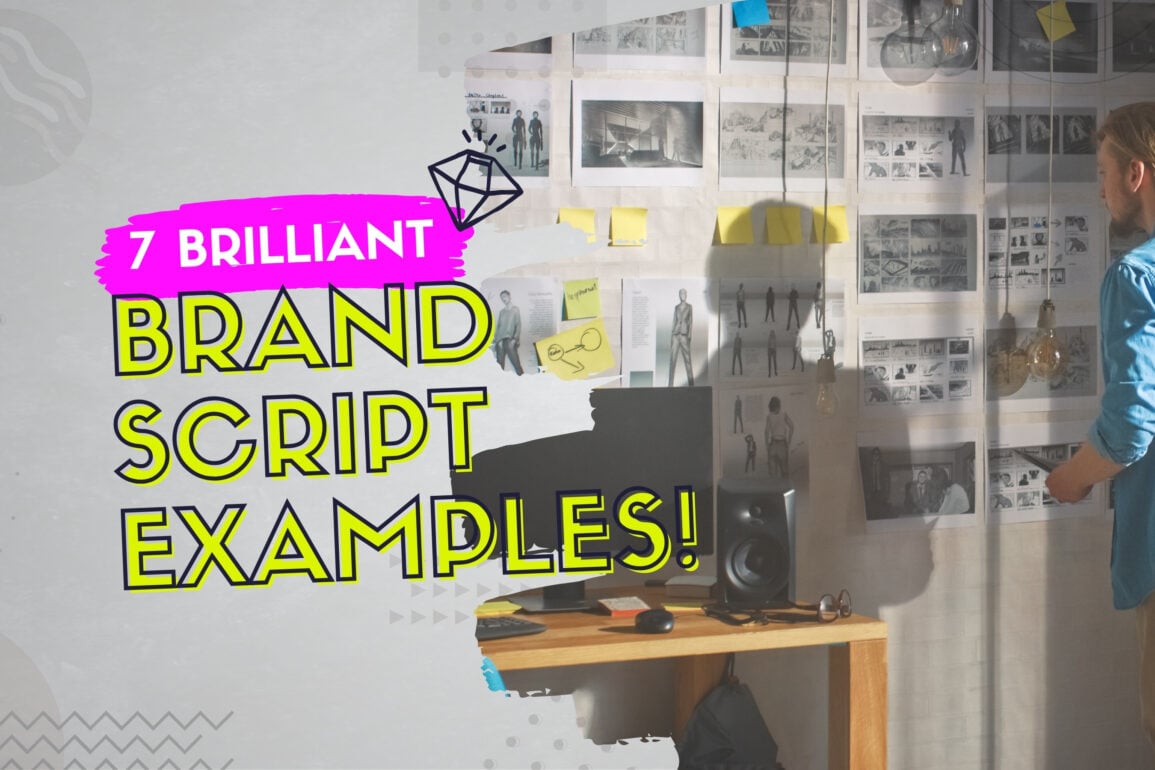How to become a better graphic designer, tips and advice

Learning how to become a better graphic designer is a lifelong process. The best designers don’t just expand their skills and knowledge when taking courses in college or university. They commit to improving their abilities on a regular, ongoing basis.
Why? Because graphic design is a living, breathing, and dynamic concept.
As the world around us changes, preferences evolve, and new technologies emerge, graphic design constantly transforms. The skills experts used five years ago are a world apart from the methodologies taught today. Ten years from now, there’ll be a whole new world for graphic design.
The good news is the ever-expanding landscape ensures a career in graphic design will never be boring. You’ll always have new avenues to explore. Plus, with the demand for graphic designers constantly growing, you should have no trouble finding jobs.
The bad news is you need to be committed to forever asking the question: “How can I improve my graphic design skills?”
What makes you a good graphic designer?
Learning how to become a better graphic designer starts with having a basic understanding of what sets a fantastic designer apart from the crowd. While the specific technical skills you’ll need to thrive in this space will vary depending on the current software in the industry and your chosen “specialization”, there are a few key characteristics all graphic designers should have.
Aside from basic talent, you should also consistently work on the following skills:
Communication
The job of a graphic designer revolves around communication. You need to be able to connect with your clients and communicate their brand, story, and ideas to a broader audience. Make sure you know how to express yourself.
Curiosity
Great graphic designers are constantly exploring new avenues. They’re always asking questions, such as “how can I become a faster graphic designer?” or “where are my weaknesses and strengths in graphic design?”
Passion
Genuine passion is the lifeblood of excellent graphic design. Design is a labor of love, often including long hours, big edits, difficult briefs, and tricky workloads. You’re more likely to struggle if you’re not committed to your craft.
Open-mindedness
Graphic designers must be open to new things, feedback, and advice. Having an open view of the world and your practice is important so you can constantly evolve. You need to explore new avenues and accept criticism to grow.
Problem solving
Graphic designers are excellent problem solvers. They’re constantly looking for out-of-the-box ways to address specific issues on behalf of their clients. You’ll need both a creative and analytical mindset in this space.
Patience
Design work can be a bit slow in spaces while waiting for feedback and updates. You need a certain degree of patience if you want to thrive in this space. Remember not to wait too long, and follow up with clients when necessary.
Reliability
In graphic design, clients aren’t just looking for evidence of fantastic talent. They want to work with a professional they know they can count on. You’ll need to work on constantly showing your trustworthiness.
How to get better at graphic design: Updating your skills
A commitment to constant learning is one of the essential parts of learning how to become a better graphic designer. This doesn’t necessarily mean returning school every couple of years to take a new degree. There are various ways you can improve your graphic design skills.
For instance:
1. Re-Study graphic design theory
If you’re already invested in the graphic design world, you have an existing knowledge of graphic design theory and how it works.
However, sometimes it’s worth refreshing your knowledge. Graphic design theory focuses on fundamental concepts like color theory, grid theory, typography, and the golden ratio.
Plenty of books and online resources help you top up your knowledge. Remember, rather than just reading about the concepts, it’s often helpful to practice them too. Challenge yourself to the occasional side project, focusing on an area of graphic design you want to improve.
2. Network with other designers
In an industry like graphic design, assuming you’re constantly “in competition” with other artists in your field is tempting. While it’s true you’ll be fighting against them for clients in some cases, they’re also an excellent resource for your education and growth.
Find opportunities to network with other professionals through events, meetings, and online groups. Join forums where you can share ideas and view the work of other professionals. You may even find yourself a mentor to help guide you in your growth.
Not only will you learn more from other professionals, but you’ll open the door to new hiring opportunities too.
3. Take online courses
While going back to college isn’t always an option for graphic designers, there are still plenty of ways to expand your knowledge and skills in the online world. The online educational environment has been growing rapidly in recent years, with new courses and tutorials always emerging.
Some are even free to access, so they’re ideal for beginners.
These courses can focus on everything from the fundamentals of graphic design to specific strategies and methodologies.
The more courses you take, the more you’ll learn. Plus, many of the options available on the web today will come with certifications you can add to your portfolio or resume, making you more attractive to future clients.
How to practice graphic design: Practice makes perfect
Practice is crucial when you’re learning how to be a better graphic designer. The more you practice your skills, the more likely you are to spot potential problems and understand your strengths and weaknesses. Every project you take on is a chance to learn and evolve.
However, it’s worth devoting time to practice outside your day-to-day jobs. Remember, the more you practice, the more you’ll expand your skills. Plus, you’ll end up with various new projects to add to your portfolio and share with potential clients.
1. Invest in regular side projects
If you’re designing the same kinds of pieces consistently in your typical job, it only gives you a little room for expansion. You can practice specific parts of the design, but your other skills may begin to dwindle if you’re not careful.
That’s why it’s worth starting your own side projects, where you can explore other methodologies in your own time.
Not only will working on your own side projects give you a great way to hone your skills, but it also means you can add more visual components to your portfolio. When attracting new clients, the more examples you can show of your work, the better.
2. Experiment with new ideas
Sticking to what you know in the graphic design world might be comfortable, but there are better ways to learn. As a graphic designer, you can’t be afraid to fail or make the wrong decisions. The only way to evolve is to experiment and discover more about your skills.
Don’t expect every experiment to work out – use them as an opportunity to learn.
Use different fonts and colors in your strategy all the time.
Mix things up with a different typeface. Explore 3D instead of 2D, and try sketching offline instead of just relying on your software. Consider downloading new software and tools to help you boost your confidence in your chosen industry. Some software options offer complimentary demos for beginners.
3. Recreate previous projects
Sometimes the best way to move forward when looking at how to get good at graphic design is to look back. Exploring your previous projects, analyzing their flaws, and looking for ways to improve will help you to overcome your weaknesses and expand your strengths.
Look at the website you made a couple of years ago and ask yourself if you can improve the hierarchy, contrast, or color scheme. Ask yourself what you’d do differently today.
If you’re still relatively new to the graphic design world and don’t have a lot of previous projects to work on, use the content created by other professionals. Browse through sites like “Behance” and evaluate the projects you see, then recreate them in your own style.
How to be great at graphic design: Quick tips
Practice and education are two core components of learning how to be a better graphic designer. However, you can implement some simple habits and practices into your routine that can also make a significant difference to your skills.
As an example, dedicate some time to processes such as:
1. Collecting feedback
As mentioned above, one of the core characteristics you’ll need as a graphic designer is an openness to feedback. Ultimately, you need to be able to receive constructive criticism if you’re going to improve.
Although it can be draining and upsetting to have your hard work picked apart by clients and other designers, it’s also a beneficial way to learn.
Actively cultivate as much feedback as you can from your customers when working on your graphic design tasks. Press your clients to tell exactly what they like and dislike about each project.
On top of this, you can also seek out insights from colleagues and other designers. Platforms like Dribbble and social media groups can be a great way to collect more insights.
Request specific feedback such as “where do you think I’ve failed to fulfill the brief?” or “What part of the design did you focus on first?” The more specific your questions, the more you can collect actionable and insightful feedback.
2. Keep up to date with software
You’ll spend a lot of time working with the software as a graphic designer. The chances are you’ll already have a preference for the tools you like to use based on what you’ve learned in college and what you’ve picked up during your career.
However, it’s worth expanding your horizons when possible. Learning how to use new programs to create balance and structure for your design could mean you’re more equipped to handle a wider range of jobs.
Don’t just stick to Photoshop for photo editing and web graphics. Expand with Adobe InDesign, Illustrator, and other external platforms too.
If you need help determining which tools are worth learning about, a good option is to check out what kind of software is listed on your industry’s job descriptions and posts. This will help you to determine what your potential clients look for in their employees.
3. Surround yourself with inspiration
The more time you spend studying, analyzing, and engaging with good design, the better you’ll be as a professional. Countless professional designers have “swipe files” and inspiration folders on their computers packed with links and screenshots of designs they’ve noticed.
There are some great locations you can check for design insights, such as:
Design platforms
Design platforms for creatives and freelancers are great for collecting inspiration. Check out Dribbble, Behance, and any other platforms you know. Take your time sorting through the top-rated and ranking products in your specific sector, and make some notes where possible.
What do you like and dislike?
Social media
Social media platforms like Pinterest and Instagram are great for visual inspiration. Search for keywords related to your industry or focus area. Find out how to use hashtags to increase your search potential too.
Depending on your practice area, you can look for things like #WebDesign or #LogoDesign. Collect as many snapshots as possible and add them to your inspiration file so that you can return them later.
Other websites and brands
Check out the design choices made by leading websites and brands – particularly those in the industry you’re most interested in. Ask yourself what you like and dislike about each design.
If you notice something awe-inspiring created by another company, list the methodologies and ideas you’d like to replicate.
How to become a faster graphic designer
Speed is often crucial when you want to learn how to become a better graphic designer. While you should always take your time with a project, you need to constantly accelerate your processes to keep up with this fast-paced marketplace.
Although taking your time on every project is tempting, remember that your clients will often want results extremely quickly. You’ll have deadlines to consider, so you need to be committed to managing your schedule as well as possible.
The following tips can help you to speed up your design processes and achieve better results:
Define your goals before you start
Before you start any design project, you will need a clear brief outlining your objectives and end goals. Determine exactly what you want to accomplish with each project. If you’re creating a logo, what does it need to say about the brand?
What color schemes are you going to be using, and what things should you likely avoid to prevent yourself from diluting the brand image?
Don’t just wait for inspiration
One of the most common mistakes graphic designers make is sitting around and waiting for inspiration to strike. Unfortunately, this is rarely an option when working with real clients. Be committed to researching sources of inspiration instead.
Look at competing brands in the industry you will be working with. Flip through books, and visit forums and social media channels.
Start sketching immediately
A blank page can be as daunting to a designer as a writer. The quicker you start sketching, the faster you’ll find an idea that works. Don’t go in expecting your first sketch to be perfect. Commit to simply getting ideas on paper and then go from there.
You can share your progress with your coworkers and community as you go to get rapid feedback too.
Design in stages
Breaking your design process up into stages can be an excellent way to speed up the experience. Begin by simply figuring out the core idea for the design. Create a rough sketch for a logo or a few wireframes for your website. Next, work on expanding the idea.
Don’t worry about the details too much; focus on ensuring everything works together. Finally, you can start adding details into the mix.
Take regular breaks
This might sound counterproductive when you’re trying to find ways of accelerating your graphic design process, but it’s also crucial. Your mind can only focus on one thing for so long before you get overwhelmed and lose concentration.
Take regular breaks to refresh your mind and consider new perspectives for your project. Make sure you get plenty of rest too. The brain can only work well when it’s properly nourished by sleep and food.
Set a time limit
Impose time limits and deadlines on yourself constantly – even if a client does not give you a specific date. Before creating any sketch or design, commit to spending a specific amount of time on this project stage.
This will change the way you approach your work and prevent you from allowing yourself to procrastinate. If you know you only have so much time to work with, you’re more likely to jump into action quickly.
It’s also worth looking for ways to cut down on the time you spend designing by implementing different forms of technology and software into the mix. Sketching on a tablet can save you time uploading your designs to your computer.
Working with software that automatically snaps your design to a specific grid will save you time organizing every design element.
The more comfortable you become with different software solutions and technologies, the more they’ll help you to streamline your work processes and performance.
Improve your graphic design skills today
Learning how to become a better graphic designer isn’t just something you should be focused on when you start your career in the industry. If you plan on getting involved with graphic design, it’s essential to recognize just how fast-paced and changeable this landscape is.
You must be committed to consistent learning and improvement to stay ahead of the competition.
The excellent news is that discovering how to get better at graphic design can be fun and exciting. The more time you spend exploring your marketplace, working on your skills and networking with other designers, the more your knowledge will grow.
Not to mention, practicing your graphic design skills will also equip you with some fantastic resources you can use to improve your chances of being hired in the future. After all, every graphic design asset you create is another bonus item to add to your portfolio.
Fabrik: A branding agency for our times.





















